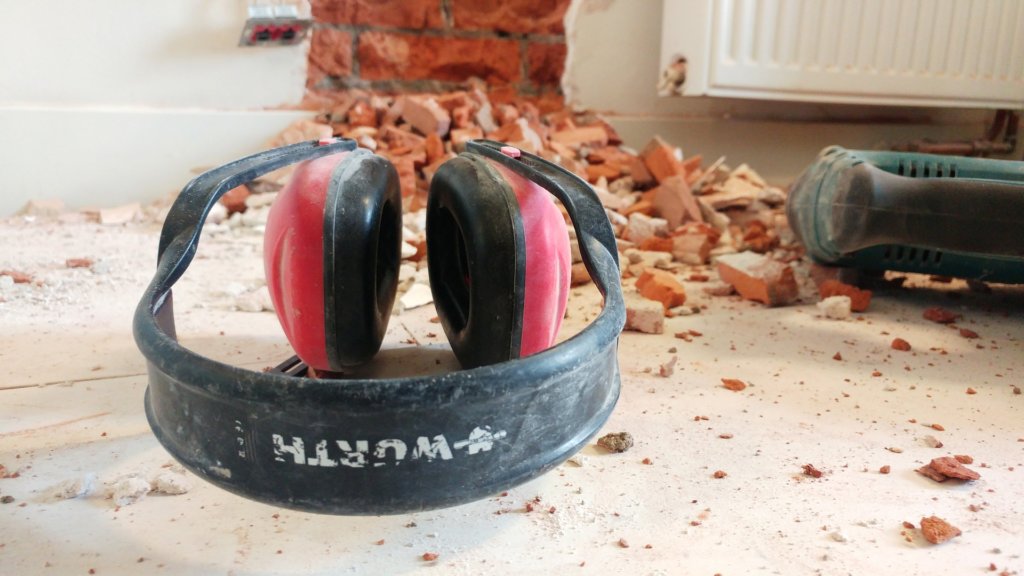The A, B, C Classification1

Introduction
A hearing protector's attenuation is used to predict the sound level of the protected ear at the eardrum. This is why this characteristic is so important. Attenuations are calculated from measurements performed in specialized laboratories following normalized procedures. They are presented as tables or graphs at each audiometric frequency from 125 Hz through 8000 Hz.
In theory, the sound level of the protected ear of a person is calculated by subtracting the calculated attenuation from the sound level in the environment the person is. Therefore the ambient sound level has to be measured in octave bands.
There have been several attempts to simplify the calculation, where the sound level could be measured simply in dBA and the attenuation replaced by using a single number rating obtained from the octave bands calculation mentioned above.
One of them is the A, B, C system. Here the protector is assigned one letter (A, B, or C), using the same data from the laboratory measurement. However, instead of calculating the sound level of the protected ear, the letter indicates the range of sound levels the protector should be used to avoid the risk of hearing loss. The entire procedure on using the system can be found in the CSA Standard Z94.2 Hearing Protectors.2
How the System Works
Using the A, B, C system to choose a protector appears to be a trivial task. There are just three steps to be followed:
- Measure the noise exposure of the individual in dBA
- Go to Table 4 in the Standard (reproduced here as Table 1) and enter the measured noise exposure in Column 1.
- Find the letter of the protector that should be used for the measured exposure in column 2.
Any protector labeled with that letter is suitable for the measured noise exposure. Furthermore, the method appears to be really simple since it eliminates the need for any calculation.
For example, if the measured noise exposure level is 88 dBA, thena protector Class C is to be used. However, if it is 95, then B or BL will do the trick!
AL and BL indicates protectors with higher attenuation at low frequencies
| Lex, 8 hours (dBA) | Recommended Class |
| <90 | C |
| 90 – 95 (inclusive) | B or BL |
| 95 to 105 (inclusive) | A or AL |
| 105 | Dual hearing protection |
Nice and easy, right? Sorry, wrong! The result is not so straight forward as it appears and there are somel cautions to be taken when using the A, B, C system:
- There is no scientific documentation available (as far as this author is aware of) to justify the system.
- There is an inherent problem when (as far as this author is aware of) calculating the classes. A slight difference of even tenths of a decibel at one or more test bands (during the measurement of the attenuation in the Laboratory) can shift a hearing protector from one class to an adjacent one.
- Classes are calculated from results obtained from laboratory results, so there is a need for derating (reducing the value to match results from real life). This has been achieved by introducing a somehow arbitrary 10 dB reduction of the noise exposure level for each Class.
- The system is only used in Canada. Devices manufactured abroad are not always labeled with the letter. As a matter of fact, while googling hearing protectors on the Net, this author found only one company that provides the Class information on its products.
The A, B, C System can be traced back to the oldest CSA standard for hearing protectors published in 1965. Subsequent editions of the Standard have kept it with minor changes.
Notes
- For exhaustive information about this subject see Berger, E.: Class Schemes vs. the NRR; E-A-R 83-35/HP; E-A-R, Indianapolis, IN.
- The Standard is under revision. The new edition is expected to be for public discussion in 2021 and published before March 2022.
- From CSA Z94.2- 14 Hearing protection devices
- CSA Standard Z94.2–1965. Hearing Protectors

